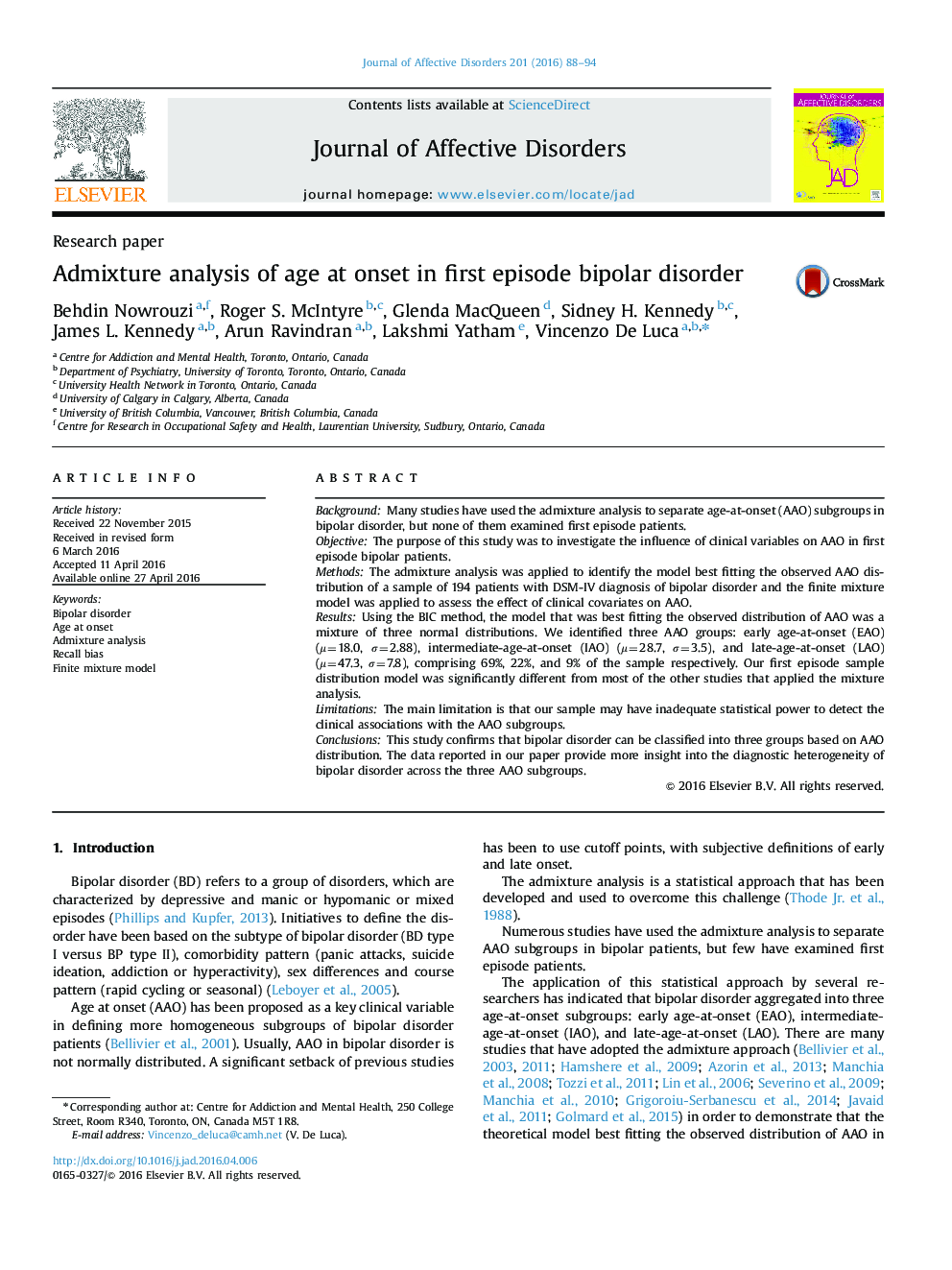| کد مقاله | کد نشریه | سال انتشار | مقاله انگلیسی | نسخه تمام متن |
|---|---|---|---|---|
| 6230001 | 1608124 | 2016 | 7 صفحه PDF | دانلود رایگان |
- Age at onset is an important feature in the definition of bipolar disorder.
- In chronic bipolar sample, the diagnosis is ascertained after many years from the first affective episode.
- Several studies have confirmed the existence of early, intermediate and late onset bipolar patients.
BackgroundMany studies have used the admixture analysis to separate age-at-onset (AAO) subgroups in bipolar disorder, but none of them examined first episode patients.ObjectiveThe purpose of this study was to investigate the influence of clinical variables on AAO in first episode bipolar patients.MethodsThe admixture analysis was applied to identify the model best fitting the observed AAO distribution of a sample of 194 patients with DSM-IV diagnosis of bipolar disorder and the finite mixture model was applied to assess the effect of clinical covariates on AAO.ResultsUsing the BIC method, the model that was best fitting the observed distribution of AAO was a mixture of three normal distributions. We identified three AAO groups: early age-at-onset (EAO) (µ=18.0, Ï=2.88), intermediate-age-at-onset (IAO) (µ=28.7, Ï=3.5), and late-age-at-onset (LAO) (µ=47.3, Ï=7.8), comprising 69%, 22%, and 9% of the sample respectively. Our first episode sample distribution model was significantly different from most of the other studies that applied the mixture analysis.LimitationsThe main limitation is that our sample may have inadequate statistical power to detect the clinical associations with the AAO subgroups.ConclusionsThis study confirms that bipolar disorder can be classified into three groups based on AAO distribution. The data reported in our paper provide more insight into the diagnostic heterogeneity of bipolar disorder across the three AAO subgroups.
Journal: Journal of Affective Disorders - Volume 201, 1 September 2016, Pages 88-94
